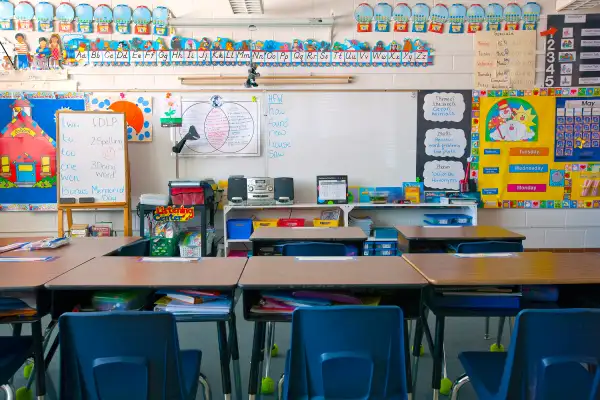Here’s How Much Your Kid’s Teacher Is Shelling Out for School Supplies

Parents might be getting sticker shock when they see the list of required supplies their kids’ school mails out, but chances are, teachers are looking at even bigger bills for their classrooms right about now.
The Education Market Association says that virtually all teachers wind up paying out of pocket for supplies, and it’s not chump change, either. On average, most spent nearly $500 last year, and one in 10 spent $1,000 or more. All told, a total of $1.6 billion in school supply costs is shifted from parents — or, increasingly, from cash-strapped districts — onto teachers themselves.
Read next: Here's the Insane Amount the Average Parent Will Spend on After-School Activities
“What we know from our site coordinators who work alongside teachers is that these educators are often digging into their own pockets to stock their classrooms with basic supplies,” said Gary Chapman, executive vice president for the national network of Communities in Schools, a nonprofit group that helps low-income kids stay in school. “Increasingly, it’s also including items that teachers themselves need to do their jobs, like cleaning supplies, trash bags, and poster boards,” he said.
So if you’re wondering why that list you got in the mail included a grab bag of items like wet wipes, spray cleaner, and even reams of copier paper, the answer is that school districts, many facing tighter budgets, have effectively outsourced the financial obligation by requesting that parents pony up for these supplies.
“Most states provide less support per student … than before the Great Recession,” a report published earlier this year by the Center for Budget and Policy Priorities found. “Some states are still cutting eight years after the recession took hold.”
For teachers in lower-income districts, the burden can be even higher. Within the past year, Communities in Schools conducted a survey of 700 teachers and found that more than 90% have to buy school supplies to help low-income kids whose parents can’t afford even basic things like pens and notebooks.
And that number of struggling families is surprisingly high, according to a report published last year by the National Education Association. “For the first time in recent history, more than 50 percent of all children attending public schools live in poverty, and the number of homeless children in public schools has doubled since before the recession,” the report noted.
Read next: Americans Are Planning to Spend Nearly $8 Billion More on Back-to-School Shopping This Year
When the Huffington Post asked teachers last year to tweet how much they spent on their classrooms, many respondents said several hundred dollars — and a few said as much as several thousand dollars, so even the $500 average reported by the Education Market Association might be low.
